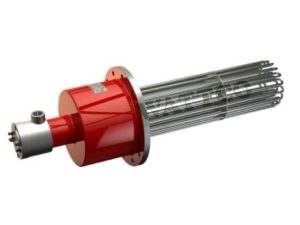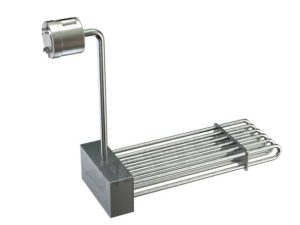Industrial Immersion Heaters: Types, Applications and Elements Used
Last updated on August 2nd, 2024 at 06:46 pm
 Immersion heaters are used in industries for various manufacturing processes that include preservation of various chemicals, fluids and gases by keeping them warm. These are installed over large tanks and vehicles, transferring heat rapidly to the content in an efficient way. The heating element submerges directly into the liquid medium in order to increase the process. Its most common applications are in petrochemical and large water containers, which require swift heating.
Immersion heaters are used in industries for various manufacturing processes that include preservation of various chemicals, fluids and gases by keeping them warm. These are installed over large tanks and vehicles, transferring heat rapidly to the content in an efficient way. The heating element submerges directly into the liquid medium in order to increase the process. Its most common applications are in petrochemical and large water containers, which require swift heating.
Types of Immersion Heater
Given below are the types of immersion heaters along with their description.
Circulation Heaters:
Another name for them is in-line heaters. Available sheath materials include steel, stainless steel or titanium. When treating lube and waste oil, steel covering is an economical option. Whereas, stainless steel is more popular for heating water because of its robustness, efficiency and anti-rusting features.
Flange Heaters:
The immersion heating element of this type of heater is a blend of numerous compounds making it sturdier; thus, resulting in features such as resistance against corrosion as well as long term durability. Copper, Incoloy, hastalloy, titanium, steel and stainless steel are effective sheath material. Different oils that maybe heavy, lubricant or light, being wax, soap, liquid detergents, or with de-ionized water are heated up with flange heaters. They are also used in industries where military ammunition and chemicals are manufactured.
Screw Plug:
This is yet another type of industrial heater that is optimal for the preservation and manufacturing of food and beverage. Other applications include laboratory clinics, treatment of automobile oils and usage within the heating process of explosive gases and liquids. 
Over The Side:
These heaters are the best devices for places with extreme environments, whether used within or outside an industry. The immersion-heating element use copper, cast alloy or titanium with an additional coating of fluropolymer/quartz making it more rugged. Degreasing and caustic fluids, heat transfer lubricants with unstable viscosities are common applications for over the side heaters.
Electric Immersion Heaters: Cost Effective and Energy Conserving
The increase in fuel prices during the last few years is leading engineers to develop a new breed of industrialized heaters that use electric power. These are eco-friendly as electric power is the fuel source for the function the heaters without any oil or residual waste. This technology is growing in popularity and is now the ideal option for almost every type of immersion heaters, while the sheath material and other features remains constant.
Mounting Options
Each heater has a specific design, shape and variation in size that makes it distinct from others. The temperature control, watt density and heating capacity depends upon the type of heater and heating element used. These are commonly installed from the top of the vessel or container as well as can be fixed at the sidewall. The control box comprising of the thermostat is kept outside to protect it from direct exposure with content inside. A separate room known as “closed system” is built that houses the entire controlling mechanism to operate the heater. This is done for the safety and protection against any malfunction.
